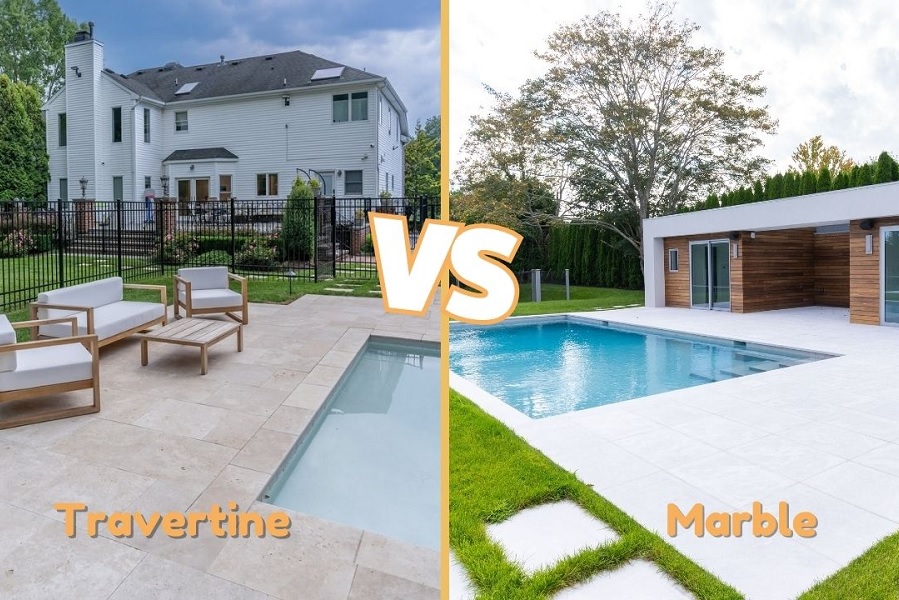
Travertine Vs. Marble
The Travertine vs. Marble debate is a classic one for homeowners and designers seeking timeless, natural beauty for their spaces. Both stones offer a connection to history and a touch of luxury that can elevate any home. However, in a city like Madrid, with its hot, dry summers and culture of indoor-outdoor living, the choice becomes more nuanced. The ideal stone must not only match your aesthetic vision but also perform beautifully within the local climate. This article provides a clear comparison to solve the Travertine vs. Marble question for your home.
How Travertine and Marble Are Formed?
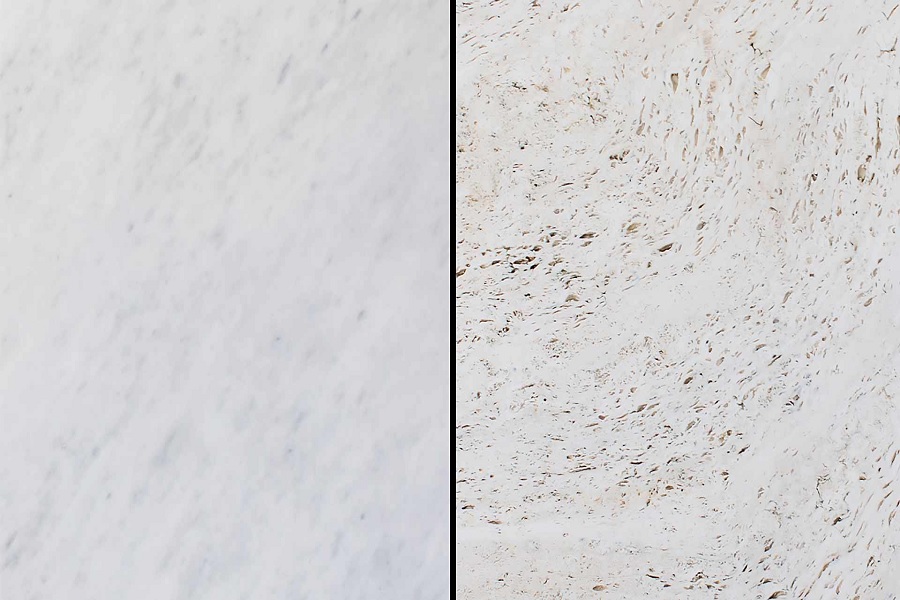
While they have distinct personalities, travertine and marble are geological cousins, both originating as limestone. Their differences arise from how they were formed. Travertine is a type of sedimentary rock, created in natural mineral springs. As hot, pressurized water bubbles up through limestone, it dissolves the stone and brings the calcium carbonate to the surface. When the water evaporates, the minerals re-harden, and the escaping gas bubbles create the small pits and voids that give travertine its characteristic porous texture.
Marble, on the other hand, is a metamorphic rock. It begins as limestone, but is then subjected to immense heat and pressure deep within the earth's crust. This process, called metamorphism, recrystallizes the limestone, making it denser and harder. The mineral impurities within the original limestone are what form the elegant, sweeping veins that are marble’s signature feature. This core difference in formation is the starting point of the Travertine vs. Marble discussion.
Aesthetic Differences: A Key Factor in the Travertine vs. Marble Debate
The most immediate difference between the two stones is their appearance. Travertine has a warm, earthy, and often rustic charm. Its color palette is typically found in warm, neutral tones like ivory, beige, gold, and soft silver-greys. Its fibrous, textured surface tells the story of its formation, giving it a character that is perfect for creating relaxed, Mediterranean-inspired, and naturalistic spaces. It feels both ancient and comforting.
Marble presents a more formal and classical elegance. It is famous for its smooth, luminous surface and its vast range of colors—from the purest whites of Calacatta and Macael to the deep blacks of Nero Marquina. The defining feature of marble is its veining, which can be subtle and feathery or bold and dramatic, creating a sense of movement and artistry. This makes marble the go-to choice for creating sophisticated, high-impact, and luxurious interiors. This is a primary consideration in the Travertine vs. Marble choice.
Here is a quick visual comparison:
· Travertine: Characterized by its porous, pitted surface and fibrous patterns. Colors are typically warm and earthy (creams, beiges, tans). The overall feel is rustic and natural.
· Marble: Characterized by its smooth, crystalline surface and elegant veins. Colors range from white to black and everything in between. The overall feel is polished and luxurious.
Durability and Hardness: A Practical Comparison
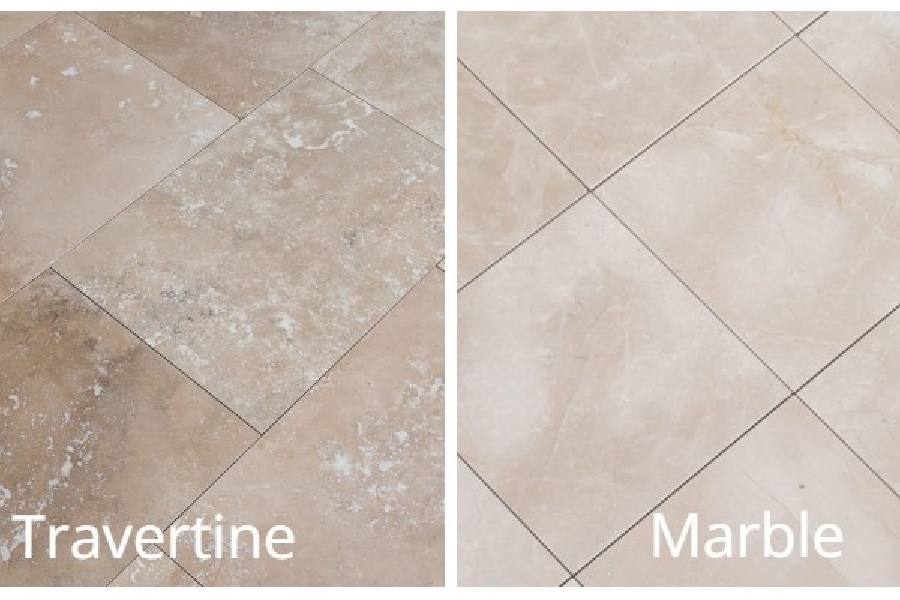
When it comes to durability, both stones are strong and have been used in architecture for millennia. However, there is a technical difference. Due to the intense heat and pressure of its formation, marble is generally harder and denser than travertine. On the Mohs scale of mineral hardness, marble typically scores around a 4, while travertine scores around a 3. This means marble is slightly more resistant to scratches and abrasion. For a very high-traffic interior area like a busy commercial entryway, marble may have a slight edge. However, for all residential applications, both stones are more than durable enough to last a lifetime with proper care.
Heat Resistance and Outdoor Suitability in Madrid
This is where the Madrid climate becomes a crucial factor and a clear winner emerges for outdoor applications. Travertine has a remarkable ability to stay cool to the touch, even under the intense summer sun. Its natural pores and lighter colors help it to dissipate heat rather than absorb it. This makes travertine the superior choice for any outdoor space in Madrid, including patios, garden walkways, and especially pool surrounds where you’ll be walking barefoot. It allows you to create comfortable and usable outdoor living areas throughout the hot season. This is a significant point in the Travertine vs. Marble comparison for local homes. While marble can be used outdoors, darker colors can become quite hot, and its smoother surface can be more slippery when wet.
Porosity and Maintenance in the Travertine vs. Marble Comparison
Both stones are porous to some degree, meaning they have microscopic holes that can absorb liquids. Therefore, both travertine and marble require sealing, especially in kitchens and bathrooms, to protect them from stains. The maintenance routine is very similar for both: use pH-neutral cleaners, wipe up spills promptly, and reseal the stone every 1-2 years. A key difference with travertine is that it can be purchased "filled" or "unfilled." Filled travertine has its natural pits filled with a color-matched grout at the factory, creating a smoother, more solid surface that is easier to clean. Unfilled travertine leaves the pits open for a more rustic look. Both stones are also susceptible to etching from acidic substances, but choosing a honed (matte) finish for either stone can make any potential etch marks much less noticeable. This is another important aspect of the Travertine vs. Marble choice.
Cost and Value: Analyzing the Travertine vs. Marble Investment
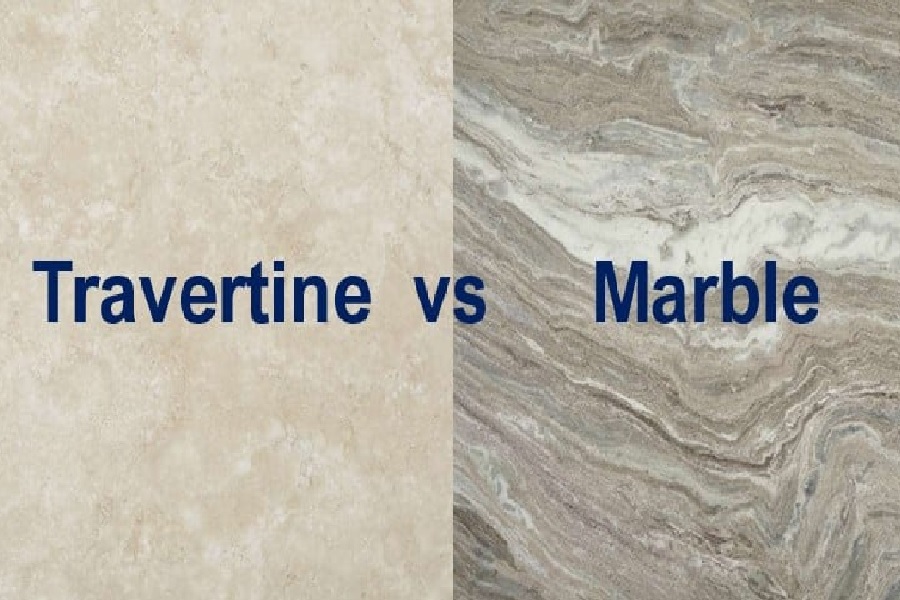
Cost is often a significant factor in any home improvement project. Generally, travertine tends to be more affordable than many types of marble. This is largely due to its wider availability. However, this is not a strict rule. The price of both stones can vary dramatically based on several factors, including the rarity of the specific type, the quality and grade of the slab (first-choice being the most expensive), the country of origin, and the complexity of the finish. It is best to view both options not as a cost, but as a long-term investment that adds significant value and timeless beauty to your property.
Find Your Perfect Stone at FMA Marble
The choice between the rustic warmth of travertine and the polished elegance of marble is a personal one. The most important step is to select a high-quality stone from a supplier you can trust.
Whether you're drawn to travertine's connection to the earth or the unmatched luxury of marble, quality and expert guidance are key. At FMA Marble, we specialize in sourcing the world's most exquisite marble slabs and can also guide you through our curated travertine selections. Visit our showroom to see and feel both stones side-by-side and let our experts help you make the perfect choice for your Madrid home.
Frequently Asked Questions
Can I use travertine for kitchen countertops?
Yes, but like marble, it must be sealed properly to protect against stains and etching. A filled and honed travertine is an excellent choice for a kitchen, as the matte finish helps hide any potential etch marks.
Which is better for a high-traffic floor?
Both are durable. Marble is technically harder and more scratch-resistant. However, a good quality, filled travertine is also very resilient, and its natural patterns can be more forgiving of daily wear and tear.
Does unfilled travertine collect dirt?
The natural pits in unfilled travertine can collect dust in an indoor setting if not cleaned regularly. For this reason, filled travertine is often recommended for interior flooring to ensure easier maintenance.
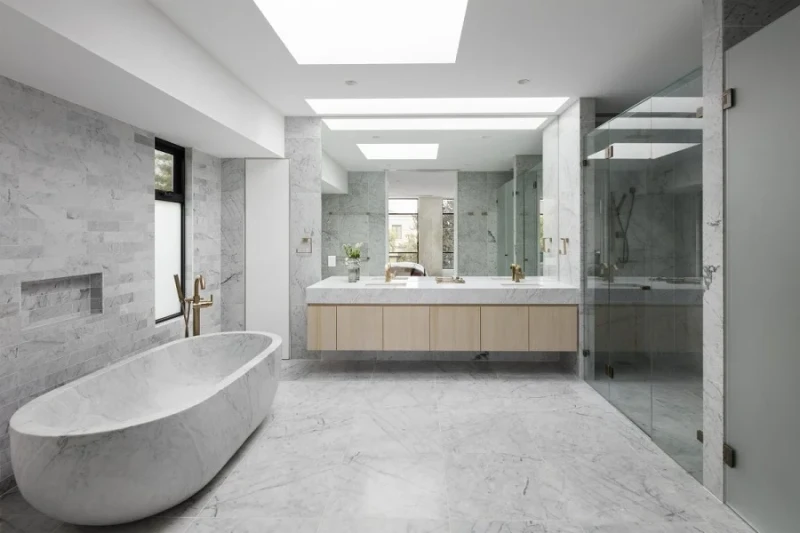
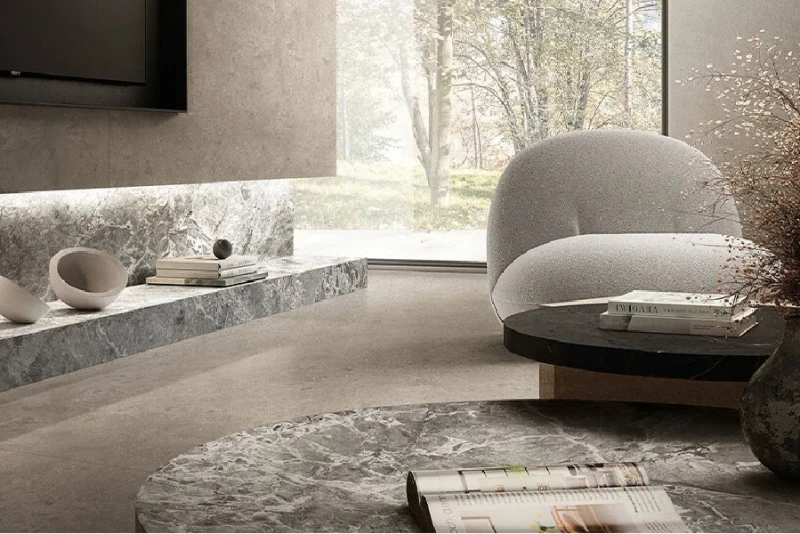
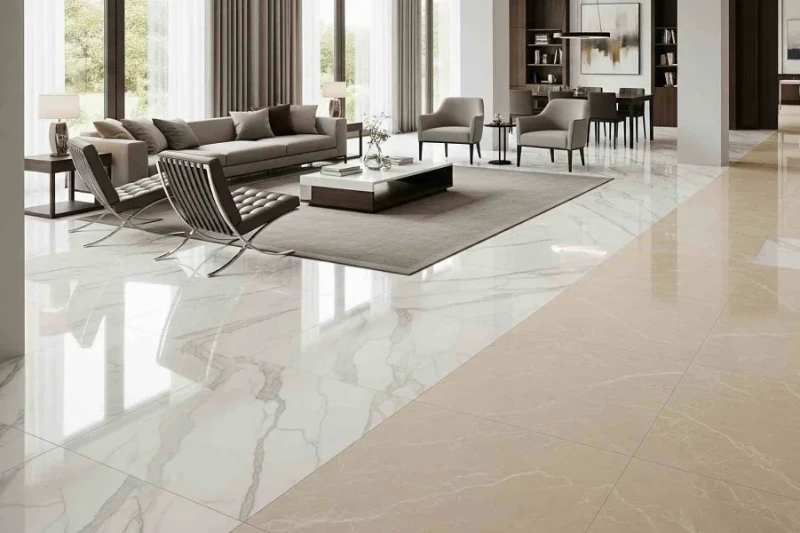
comments
No Comment YetLeave a Comment